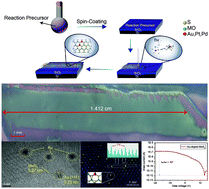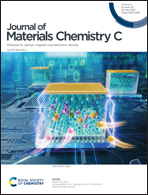One-step growth of centimeter-scale doped multilayer MoS2 films by pulsed laser-induced synthesis
Abstract
Recently, two-dimensional MoS2 has attracted interest for applications in electronics, optics, energy storage, and catalysis. Furthermore, n-type or p-type doping of MoS2 can result in improved film properties, thereby expanding the range of applicability. However, the rapid preparation of large-scale MoS2 films and the effective doping of such films remain challenging. Herein, we report on a one-step growth method called pulsed laser-induced synthesis (PLIS) that can resolve these challenges and can quickly (5–10 min) prepare centimeter-scale MoS2 films directly and selectively on a substrate. A continuous length of up to 1.412 cm can be achieved with MoS2 films prepared by the described methods. Moreover, in situ doping of noble metals (Au, Pt, and Pd) to convert MoS2 into a p-type semiconductor was realized, consistent with the results obtained from first-principles calculations. The STEM images reveal that the phenomena of surface modification and cation substitution occur in the doped MoS2 films. The doped MoS2 films were further processed into a p-type field effect transistor with an on/off ratio of 105. Importantly, this technique can be applied to other transition metal dichalcogenides (TMDCs) while employing various doping elements; this scheme provides an innovative method for upscaling production and large-area doping of TMDC thin films.



 Please wait while we load your content...
Please wait while we load your content...